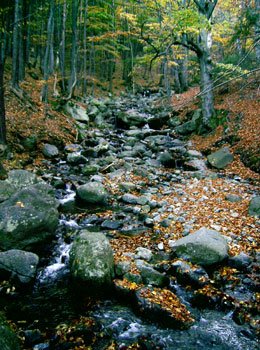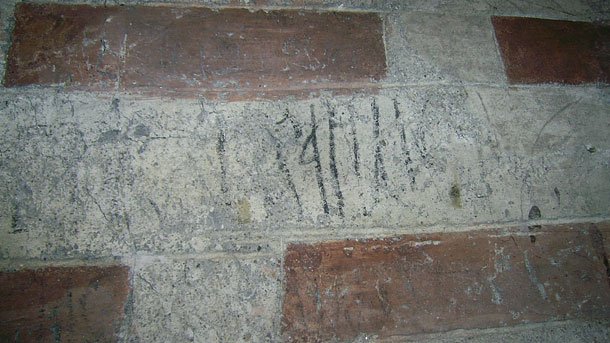
The Holy Virgin of Vitosha Convent is located quite close to Sofia, near the one-time village of Dragalevtsi, today a suburb of the city. It was founded in 14 c. as a stauropegic monastery directly subordinated to the Patriarch. A cultural and educational center in the past, today the nunnery meets visitors from across Bulgaria and from abroad.
The Dragalevtsi Convent has two churches under the same roof. The older one has been granted the status of a monument of culture and has been in a process of restoration for years. The new one stands by it, and is quite beautiful and well-maintained. Although the nunnery has quite a few cells, it does not offer accommodation and meals to visitors. „We are close to mountain chalets, hotels and taverns. What we try to do is offer spiritual ‘food’ to people”, nun Seraphima says and goes on with the history of the monastery.
© Photo: Albena Bezovska

© Photo: Albena Bezovska
"The Dragalevtsi Convent is among many monasteries in the so-called Minor Holy Mountain of Sofia. It has been here since the 14 c. when the Bulgarian kingdom was led by Tsar Ivan Alexander. We are aware that he strongly promoted the construction of monasteries and churches and Christian faith prospered. During the Turkish Conquest the monastery was reduced to rubble. In 15 c. a new church was built over the foundations of an earlier one. Boyar Radoslav Mavar donated money for its frescoes. Surviving to the present day it is impressive with its unique images. They have been in a process of restoration over the last years. The frescoes found in the church display two layers – from 15 and 17 c. Fortunately, they have been preserved very well, something that happens only seldom. Restoration artists have succeeded in separating the upper layer and in boosting it. The earlier layer remained on the walls. Restoration works are near completion. The frescoes from the 17 c. are kept under the proper conditions. There is a plan to place them in a church specially built for the purpose – a replica of the original one. However, we are still short of money for this project. In the church’s narthex some scenes have bee preserved that are a rarity in the Orthodox tradition. One of them is the Heavenly Scroll. The biblical description of the Apocalypse goes that the heaven and earth shall roll up like a scroll. The frescoes depict the scroll with the zodiac, and the angels with their horns. Another scene is Abraham’s Sacrifice. All images have been created with a remarkable freedom of expression and bear an emotional and visual message of spiritual truth", says nun Seraphima.

© Photo: Albena Bezovska
Originally, the Dragalevtsi Monastery was male. It was an important center during the Ottoman Rule (1396-1878). Hundreds of Bulgarian children were trained in the monastic school organized here. In mid-19 c. the monastery’s father superior was Genadius, a close associate of Bulgaria’s national hero Vasil Levsky. Genadius was actively involved in the activities of the revolutionary committee in Sofia that was part of Levsky’s network aimed to fight for the liberation of Bulgaria. Levsky often found refuge in the monastic cells. A beautiful memorial plate in the churchyard reminds visitors of the involvement of Dragalevtsi monks in the struggles for national liberation.

© Photo: Albena Bezovska

© Photo: Albena Bezovska
"There is a lot of evidence that people from different points of the world came to the monastery”, nun Seraphima continues. “This shows in the graffiti they have left on the outer wall of the church. They have been photographed and published in the book dedicated to the monastery. Some of them can be seen with the naked eye. Today we have visitors from various nationalities and from different continents of the world. Some time ago we had a visit from Buddha monks. Visitors include nationals of India and Japan, people professing Islam and Judaism. They are interested in history, icons and frescos.”
Before taking the path of dedication to God, nun Seraphima graduated a music school with piano, and later the Academy of Music and Dance in the city of Plovdiv. She is still very much interested in music and composes some pieces. „We are visited by colleagues from the Academy of Theology, as well as by young families whose lives are linked to the Dragalevtsi Convent. Their children visit church service regularly, and sing with us in the church. It is so nice… Sometimes, people come to us to share their problems and ask for advice. Many residents of Sofia come over for an outing on weekends or holidays”.
English version Daniela Konstantinova
The trips of Bulgarian citizens abroad in August 2024 were 903,400, or 8.3% more in comparison to August 2023, the National Statistical Institute has reported. Trips for the purpose of rest and excursion increased in August by..
Since the beginning of the year, 10.7 million foreigners have visited Bulgaria, Rumen Draganov, director of the Institute for Analyses and Evaluations in Tourism, told BNR. This represents a 5% increase over last year. According to Rumen..
Over 3,200 participants and guests of different ages and nationalities filled the Summer Theater in Burgas for the opening of the 9th edition of the European Gymnastics Festival for people over fifty - Golden Age Gym Festival 2024 . The festival..
A country at the centre of ancient civilisations, whose historic sites sit amongst world-ranked Black Sea coastlines and snow-capped World Cup ski..
Bulgaria is presenting its own stand at the autumn international tourism fair in Bucharest, which is taking place from 21 to 24 November . Visitors to..

+359 2 9336 661
